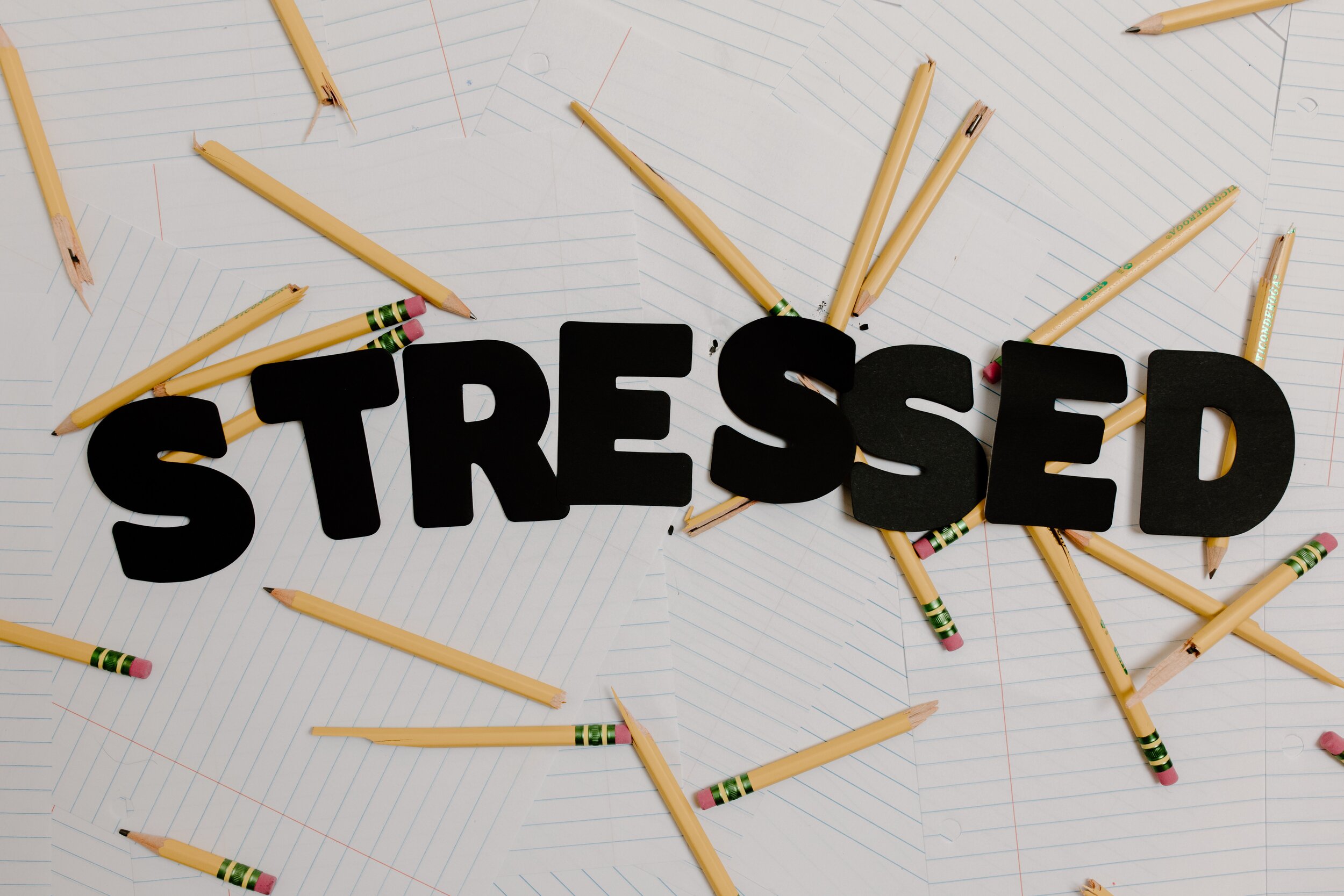Student Burnout - How to Identify and Prevent it in 2024
By: Lucie-Kay Desthuis-Francis on Jan 23, 2024 11:18:03 AMStudent Burnout - How to Identify and Prevent it in 2024
By: Lucie-Kay Desthuis-Francis on Jan 23, 2024 11:18:03 AM
Navigating College Stress: Understanding, Recognizing, and Overcoming Student Burnout
Unfortunately, stress is a common part of college life. Balancing a heavy course load, extracurricular activities, part-time jobs, social obligations, and other responsibilities can be challenging for students. It may also be hard for them to find the downtime to completely disconnect.
It’s normal for students to at times feel overwhelmed by the different moving parts that make up the college experience. However, if a student is feeling completely disengaged from their academic and social life, they may be experiencing student burnout.
While detrimental to the student experience and overall well-being, student burnout is both preventable and reversible. This article defines student burnout, outlines college burnout symptoms, and provides tips for preventing academic burnout.

What is student burnout?
Burnout is a syndrome resulting from an extended period of stress that has gone unmanaged. Classified by the World Health Organization as an occupational phenomenon, burnout is detrimental to physical and mental health.
Students facing prolonged periods of stress and overexertion may experience burnout. Burnout symptoms include a loss of interest in activities that once brought pleasure, such as hobbies or seeing friends and family.
College student burnout symptoms include:
· Feeling of extreme fatigue and apathy.
· Detachment from or negative feelings towards student life.
· Decline in academic performance.
The triggers of academic burnout often include an overwhelming workload and chronic stress associated with competing demands. Other contributing factors may include choosing the wrong major or not having the right support network.
Burnout can lead to serious health issues, including depression, vulnerability to illness and disease. It also affects student retention rates and can lead to students dropping out. Individuals experiencing the phenomenon may also turn to negative coping mechanisms, such as alcohol or drug abuse.

How to spot the signs of burnout?
College students often experience high levels of stress, making burnout challenging to identify. It is when stress becomes chronic, affecting academic and social life and overall well being, that it could be classified as burnout. Medical students are reportedly among the most common candidates for burnout.
It is difficult to identify that a student is in burnout because instead of reaching a breaking point they often keep going. The pandemic and transition to online learning have made it even more difficult to identify when a student is approaching or experiencing burnout.
This is why it is important to help students recognize the warning signs and anticipate what might cause it in the first place. The signs leading to student burnout include:
· Persistent mental, physical and emotional exhaustion.
· Lack of motivation, in studies, social and extracurricular activities.
· Increased irritability.
· Dip in grades/performance.
· Lack of concentration.
· Forgetfulness.
· Making careless mistakes.
· Constant feeling of being overwhelmed.
· Difficulty performing everyday tasks.
· Disengagement from friends and colleagues.
· Decline in physical health and overall well-being.
· Loss of confidence.

Tips to preventing student burnout
The good news is that student burnout can be prevented. The key to stopping burnout is to catch it as early on as possible or, even better, take preventative measures to stop its onset. This is why it is important for colleges to provide support to students in identifying the sources of their stress, setting up a stress management plan, and encouraging work-life balance.
Awareness and stress management campaigns are key to avoiding student burnout. Guiding students to establish a healthy work-life balance from day one is extremely important. Students are less likely to experience burnout if they do these 5 things:

1. SAY “NO”
Juggling multiple obligations may seem like the road to success. However, there is a fine line between maximizing opportunities and biting off more than you can chew. Students need to learn how to say “no” to certain things and be strategic in choosing what they commit to.
This is especially important when it comes to deciding course load. When determining their academic schedule, students should consider all of their long term obligations. These include extra-curricular activities, part-time jobs, as well as penciling in time for family and friends.
The most fulfilled and successful students are able to strike the balance between academic and social obligations, as well as wellness activities, for a relaxed mind and body. Making space for personal downtime is also very important.

2. BREAKDOWN TASKS INTO BITESIZE PARTS
The ability to break down tasks into manageable chunks significantly helps reduce deadline related stress. Effective time management and prioritization is also very helpful in keeping track of deadlines and curbing procrastination.
Burnout often happens when students don’t set small milestones to feel good about along the way and get overwhelmed by the larger end goal. It is also important for goals to be realistic and achievable.
Taking on an unrealistic workload or number of extracurriculars can certainly bring about burnout. CCTs and learning pathways are great tools colleges and universities can provide to help students manage their co-curricular activities and set bitesize goals.

3. PRIORITIZE REST
Most of us have pulled an all-nighter at least once in our life. However, sleep-deprivation, especially when it becomes chronic, is dangerous and a path to student burnout. While staying up all-night to study may seem productive, it impairs academic performance and overall health.
Science suggests that adults between the ages of 18 and 25 should get between 7 and 9 hours of sleep each night. Prioritizing rest also means that students need to carve out downtime to reflect and recharge. This means being able to switch off completely.
Taking vacations, having weekends off, and taking downtime each day, enables students to truly disconnect. Regularly unplugging from technology, by scheduling screen-free time, is important as it enables the brain to unwind. Activities such as yoga, meditation and nature walks are also great ways for students to recharge their batteries.

4. EAT WELL AND EXERCISE REGULARLY
Eating well and staying active are key to protecting physical and mental health. When students feel overworked, eating well and exercising often get pushed aside. However, when the pressure is on, it becomes even more important to maintain a healthy routine.
A balanced diet and regular physical activity help maintain productivity and improve mood, releasing feel-good endorphins. Studies have shown that exercising outdoors in particular boosts overall wellbeing and reduces stress. It is also important to remain hydrated as dehydration can add to stress, bringing about light-headedness and lethargy.
Student experience management tools are a great way to encourage students to have a good work-life balance. Gamification is also a great way to incentivize students to get involved in healthy co-curricular activities through student organizations and clubs.

5. CONNECT WITH OTHERS
While students need to keep their head down and study, setting aside time to connect with other students and mentors is critical to a positive college experience. Developing social activities by joining student groups, clubs, Greek life or sports teams is a great way to engage with other students and enjoy college life.
Connecting with others in person on campus at events or virtually, via a student engagement portal, is essential to preventing student burnout. Having a strong support network helps students feel less isolated. It also helps students realize that they are not alone in experiencing stress and anxiety.
Students who are struggling and may feel they are on the path to burnout should know that they are not alone. They should also feel comfortable reaching out to fellow students, staff, or healthcare professionals. Dedicated campus resources, such as Student Services are also available.

Students put a lot of pressure on themselves to excel in college. However, nothing is more important than their health and well-being. Student burnout is both treatable and preventable using stress management techniques and by maintaining a healthy work-life balance.
Colleges that help students tackle the different stress levels of academic life and provide students with ways to connect and interact have happier, more well-rounded students. Such support networks also help mitigate the risk of college burnout.

.png)
.png)
.png)

